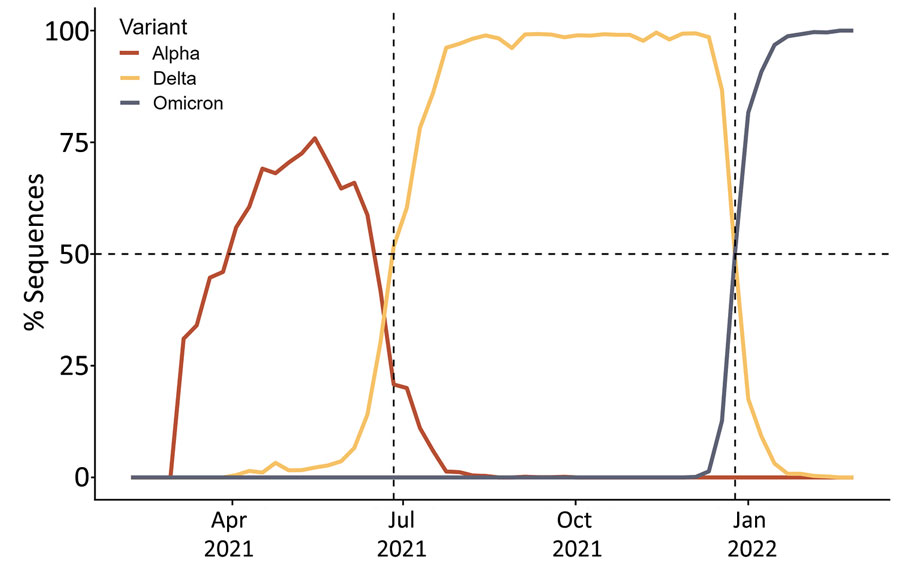Volume 29, Number 1—January 2023
Dispatch
COVID-19 Symptoms by Variant Period in the North Carolina COVID-19 Community Research Partnership, North Carolina, USA
Figure 1

Figure 1. Overview of COVID-19 waves by variant in North Carolina, USA. We defined pre-Delta as an infection before June 26, 2021. Delta was the predominant variant during June 26–December 25, 2021, after which Omicron became dominant. Data were provided by North Carolina Department of Health and Human Services.
1These senior authors contributed equally to this article.
Page created: December 09, 2022
Page updated: December 22, 2022
Page reviewed: December 22, 2022
The conclusions, findings, and opinions expressed by authors contributing to this journal do not necessarily reflect the official position of the U.S. Department of Health and Human Services, the Public Health Service, the Centers for Disease Control and Prevention, or the authors' affiliated institutions. Use of trade names is for identification only and does not imply endorsement by any of the groups named above.